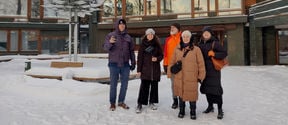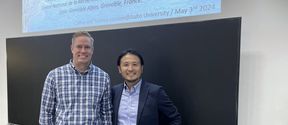Funding granted for research into physics of microscopic plant roots
The aim is to create a new micromechanical tool to better understand how root mechanics arise from cells and how living materials like plant roots adapt to external stresses
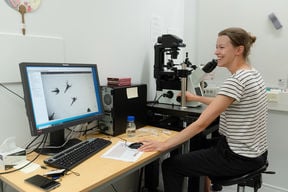
Matilda Backholm didn’t expect to take up glass blowing as part of her early doctoral work. But in her attempts to find a more sensitive way to measure how tiny organisms swim, building her own tools became the best option.
Now an assistant professor at Aalto University, Backholm not only mastered this unique glass micropipette force sensor but is expanding its use to uncover the complex swimming patterns of brine shrimp.
Measuring only one millimetre in length, the brine shrimp in Backholm’s latest research occupy the space between micro- and macroscopic organisms. But don’t let their tiny size fool you—the swimming behaviour of these mesoscopic animals could be a useful model in the young field of mesorobotics.
The European Research Council announced on September 5 they are awarding Backholm a €1.5 million starting grant. Armed with these financial resources, Backholm says she’s eager to get started on this fundamental research.
‘It’s a huge luxury to have this five-year project where we are allowed to just aim for excellence in science,’ says Backholm. ‘At the end of the day, the goal of our research is to understand physics. I'm a big fan of this type of curiosity-driven science where we really get to ask the big questions.’
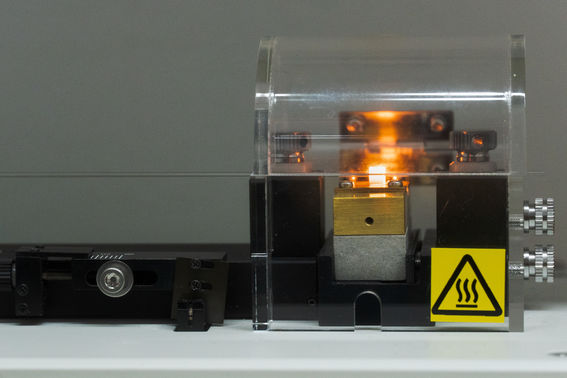
How do brine shrimp manoeuvre through the complex regime of a mesoscale world? How do the hydrodynamics change when a pair of shrimp swim close together? What about a swarm of shrimp? These are some of the questions Backholm aims to answer through her experiments.
In the familiar macroscopic world, the dynamics of swimming are dominated by inertia. When things get really tiny, viscosity becomes more important. But what about in between, in the realm where brine shrimp swim? Backholm says that measuring their behaviour will prove to be tricky, because their movements are time-dependent and nonlinear.
Here’s the plan: Backholm will catch the shrimp at the tip of the micropipette force sensor, which is a flexible, hollow glass needle that uses suction to subdue the subject. The position of the micropipette is then analysed under microscope, and any slight movement caused by the shrimp swimming will enable Backholm to determine the force.
She plans to do these experiments with individual shrimp and with groups as large as seven shrimp. By studying their swimming behaviour individually and in a swarm, Backholm will add to the limited data we have about organisms of this size.
Assistant Professor Matilda BackholmI'm a big fan of this type of curiosity-driven science where we really get to ask the big questions.
Backholm’s findings will pave the way for a better understanding of mesoscale movement. In the short term, this could fuel further research on mesoscale organisms—a poorly-explored avenue of living matter physics—but in the longer term, this work could provide key insights for building swarms of mesorobots with biomedical applications. Think ‘swallowable surgery,’ says Backholm.
‘These shrimp have evolved over a very large time span to swim the way they do. Rather than starting from scratch, we can actually learn from nature,’ says Backholm. ‘If we want to build a small swarm of robots, the brine shrimp’s swimming pattern, frequency, and type of motion can inform us how to make the robots as efficient as possible.’
Mesoscopic robot swarms may sound like science fiction (and indeed, realizing such a technology is far in the future), but Backholm says the freedom to conduct this type of fundamental research is the prerequisite for such advances.
‘We need to understand that in order to make something artificially ourselves, we first need to do that upfront legwork,’ she says. ‘The purpose of this project is achieving scientific excellence, and our sole focus is to do just that.’

The aim is to create a new micromechanical tool to better understand how root mechanics arise from cells and how living materials like plant roots adapt to external stresses
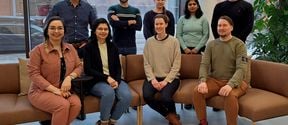
We are a group of physicists, biologists, engineers, and chemists working with big questions at the interface between physics and biology. We develop our own experimental and analytical tools to probe the dynamics and flow in soft, living, and fluid materials.

